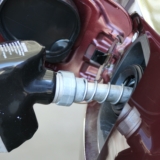Ford’s EV Losses: A Billion-Dollar Journey into the Unknown
In the tumultuous landscape of the automotive industry, Ford Motor Company finds itself navigating uncharted territories. With the electrification revolution in full swing, traditional giants like Ford are facing a reckoning of colossal proportions. The latest financial reports paint a grim picture, revealing that Ford hemorrhaged approximately $4.7 billion on electric vehicles (EVs) last year alone. Yet, the road ahead appears even bumpier, with projections indicating further losses ranging from $5 billion to $5.5 billion for the upcoming fiscal year.
The narrative of Ford’s electrification journey is a tale of ambition, innovation, and the sobering reality of market dynamics. In a bid to stay relevant in an increasingly eco-conscious world and to compete with the likes of Tesla, Ford embarked on an ambitious quest to electrify its fleet. However, the transition has proven to be far from smooth sailing.
At the heart of Ford’s struggles lies a confluence of challenges, ranging from hefty investments in research and development to the inherent complexities of transitioning from internal combustion engines to electric powertrains. The company’s foray into EVs has demanded substantial capital expenditures, including investments in battery technology, charging infrastructure, and the development of new vehicle platforms.
Despite pouring billions into its electrification endeavors, Ford finds itself grappling with a harsh reality: the economics of EVs remain unforgiving. While demand for electric vehicles is on the rise, profitability remains elusive for many manufacturers. Factors such as high upfront costs, supply chain constraints, and intense competition have eroded profit margins, leaving industry stalwarts like Ford struggling to find their footing in a rapidly evolving landscape.
Moreover, Ford’s woes underscore a broader industry-wide dilemma: the delicate balance between sustainability and profitability. While consumers increasingly prioritize environmentally friendly options, the transition to electric vehicles comes with significant financial implications for automakers. The shift requires substantial investments in technology and infrastructure, all while navigating regulatory pressures and shifting consumer preferences.
Amidst the sea of challenges, Ford’s leadership faces a daunting task: charting a course towards sustainable profitability in an electrified future. The company must strike a delicate balance between innovation and fiscal prudence, ensuring that its investments in EVs yield long-term dividends without jeopardizing its bottom line.
However, amidst the gloomy financial forecasts, there lies a glimmer of hope. Ford’s commitment to electrification represents a bold bet on the future—a testament to its resilience and adaptability in the face of adversity. While the road ahead may be fraught with obstacles, Ford remains steadfast in its pursuit of a greener, more sustainable automotive industry.
As the electric revolution accelerates, Ford’s journey serves as a cautionary tale and a beacon of hope for an industry in flux. The path to profitability may be fraught with challenges, but for Ford and its counterparts, the journey towards a brighter, electrified future is well underway.




